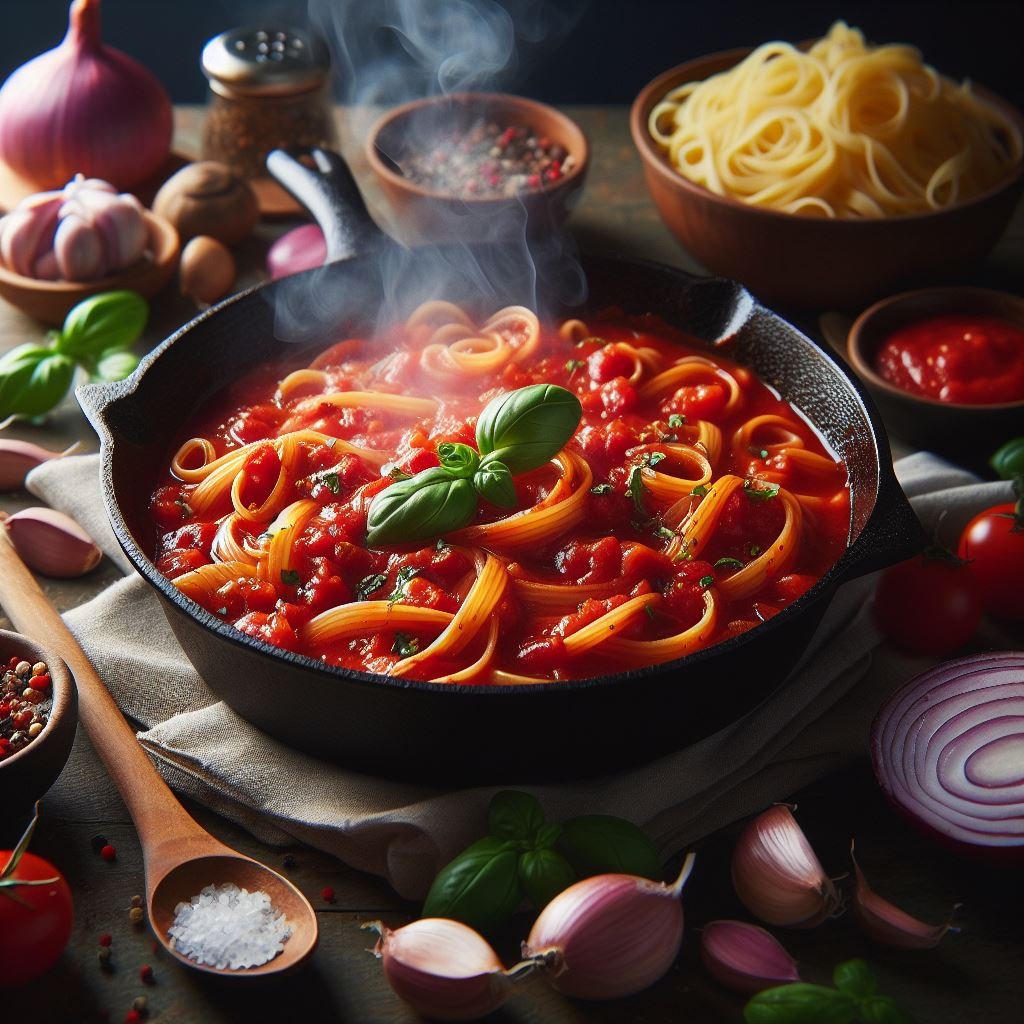How to Make Pasta Sauce with Passata
Imagine the aroma of a simmering pasta sauce filling your kitchen – a sauce made from scratch with love and care. Making your own pasta sauce is not only deeply satisfying but also adds a personal touch to your meals. In this guide, we’ll explore how to create a delicious pasta sauce using passata, an ingredient that can elevate your sauce to new heights of flavor.
Passata 101: Understanding Your Key Ingredient:
Passata is a smooth, uncooked tomato puree that has been strained of seeds and skins. It's a staple in Italian cooking, revered for its versatility and rich, concentrated tomato flavor. Unlike crushed tomatoes or tomato paste, passata provides a silky texture perfect for pasta sauces, making it a favorite among cooks. Its use in pasta sauce brings a depth of flavor that's both fresh and robust.
Ingredients and Tools Needed:
You’ll need:
2 cups of passata (usually about one jar)
2 tablespoons olive oil
2 garlic cloves, minced
1 small onion, finely chopped
1 teaspoon dried basil (or a handful of fresh basil leaves)
1 teaspoon dried oregano
Salt and pepper to taste
Optional: red pepper flakes, fresh herbs, vegetables, or ground meat
Tools:
Medium saucepan
Wooden spoon
Cutting board and knife
Step-by-Step Guide to Making Pasta Sauce with Passata:
Preparation: Begin by heating the olive oil in your saucepan over medium heat. Add the minced garlic and chopped onion, sautéing until the onion is translucent and fragrant.
Adding Passata: Pour the passata into the saucepan. Stir in the dried basil and oregano (or any other herbs you’re using).
Simmering: Reduce the heat and let the sauce simmer gently. This slow cooking process allows the flavors to meld together. Stir occasionally and simmer for about 20-30 minutes.
Seasoning: Season with salt and pepper to taste. If you enjoy a bit of heat, a pinch of red pepper flakes can be a great addition.
Finishing Touches: If using fresh herbs, add them towards the end of cooking to preserve their flavor.
Customizing Your Sauce:
This basic sauce is a canvas for your culinary creativity. Consider adding sautéed vegetables like bell peppers or mushrooms for a heartier sauce. For meat lovers, brown some ground beef or sausage before adding the passata. Adjusting herbs and spices allows you to tailor the sauce to your taste.
Pairing Your Sauce with Pasta:
This sauce pairs wonderfully with a wide range of pasta. For a classic combination, try it with spaghetti or penne. If you’re using fresh herbs, consider pairing with lighter pasta like angel hair or fusilli to complement the delicate flavors.
Storing and Reusing Your Sauce:
Leftover sauce can be stored in the refrigerator for up to a week or frozen for up to three months. This makes it a great make-ahead option for busy days. You can also use it as a base for other dishes like lasagna, casseroles, or as a pizza sauce.
Making pasta sauce with passata is an easy yet rewarding culinary adventure. It’s a wonderful way to start exploring the art of homemade sauces, adding a personal touch to your meals that can’t be replicated with store-bought varieties. Experiment with different ingredients, enjoy the process, and don’t forget to share your delicious creations with loved ones!











